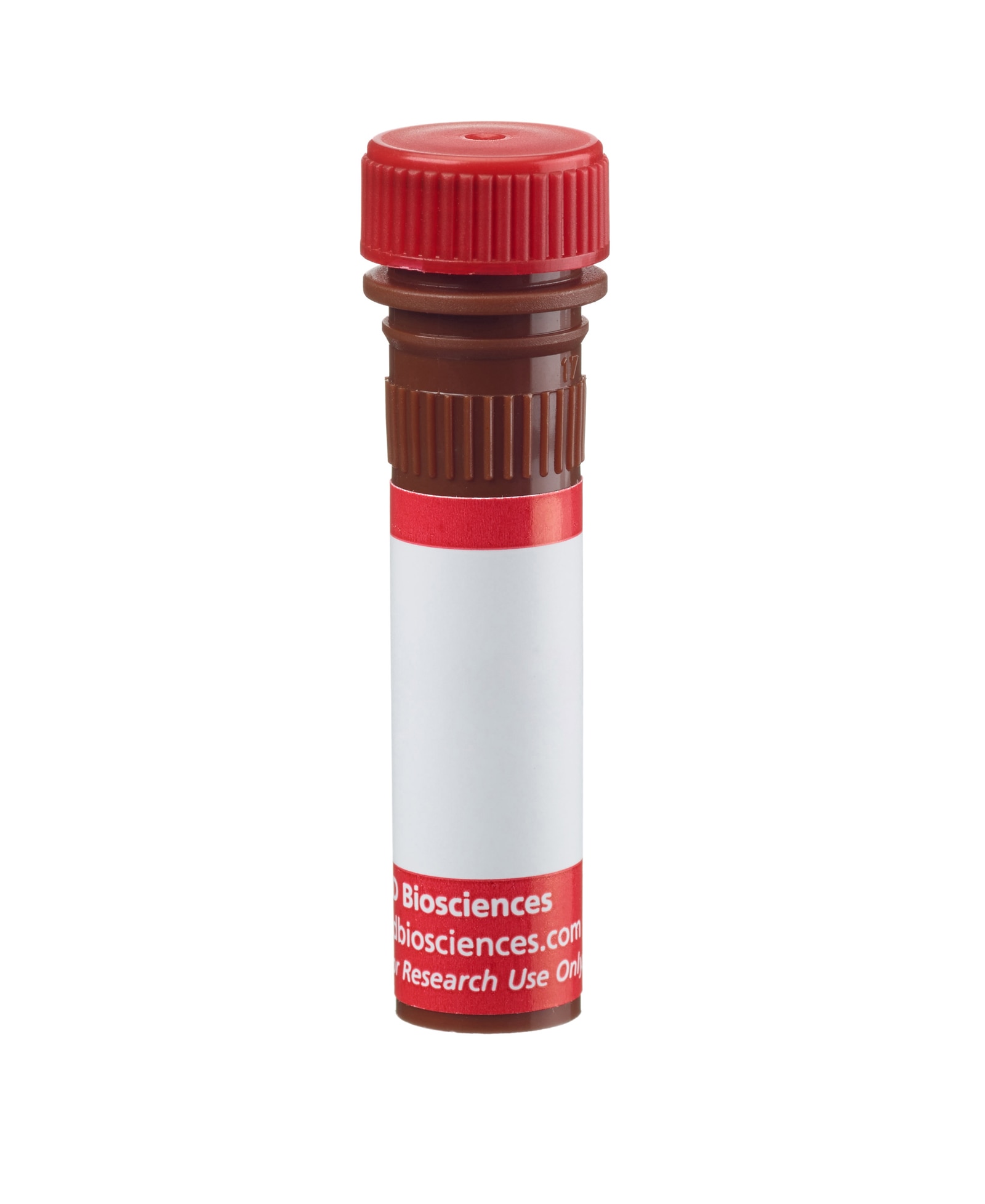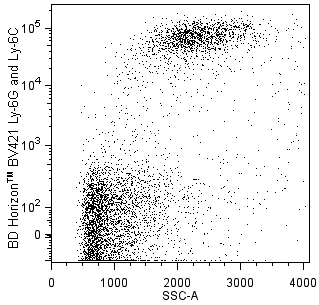Old Browser
This page has been recently translated and is available in French now.
Looks like you're visiting us from {countryName}.
Would you like to stay on the current country site or be switched to your country?




Two-color flow cytometric analysis of CD177 expression on mouse granulocytes. Bone marrow cells from C57BL/6 mice were preincubated with Purified Rat Anti-Mouse CD16/CD32 antibody (Mouse BD Fc Block™) (Cat. No. 553141/553142). The cells were then stained with BD Horizon™ BV421 Rat Anti-Mouse Ly-6C and Ly-6G (Gr-1) antibody (Cat. No. 562709) and either Alexa Fluor® 647 Rat IgG2b, κ Isotype Control (Cat. No. 557691; Left Plot) or Alexa Fluor® 647 Rat Anti-Mouse CD177 antibody (Cat. No. 566599; Right Plot) at 0.5 µg/test. Two-color flow cytometric contour plots showing the correlated expression patterns of CD177 (or Ig Isotype control staining) versus Ly-6C and Ly-6G (Gr-1), were derived from gated events with the forward and side light-scatter characteristics of viable bone marrow leucocytes. Flow cytometric analysis was performed using a BD LSRFortessa™ X-20 Flow Cytometer System. Data shown on this Technical Data Sheet are not lot specific.


BD Pharmingen™ Alexa Fluor® 647 Rat Anti-Mouse CD177

Regulatory Status Legend
Any use of products other than the permitted use without the express written authorization of Becton, Dickinson and Company is strictly prohibited.
Preparation And Storage
Product Notices
- Since applications vary, each investigator should titrate the reagent to obtain optimal results.
- An isotype control should be used at the same concentration as the antibody of interest.
- Caution: Sodium azide yields highly toxic hydrazoic acid under acidic conditions. Dilute azide compounds in running water before discarding to avoid accumulation of potentially explosive deposits in plumbing.
- The Alexa Fluor®, Pacific Blue™, and Cascade Blue® dye antibody conjugates in this product are sold under license from Molecular Probes, Inc. for research use only, excluding use in combination with microarrays, or as analyte specific reagents. The Alexa Fluor® dyes (except for Alexa Fluor® 430), Pacific Blue™ dye, and Cascade Blue® dye are covered by pending and issued patents.
- Alexa Fluor® is a registered trademark of Molecular Probes, Inc., Eugene, OR.
- Alexa Fluor® 647 fluorochrome emission is collected at the same instrument settings as for allophycocyanin (APC).
- For fluorochrome spectra and suitable instrument settings, please refer to our Multicolor Flow Cytometry web page at www.bdbiosciences.com/colors.
- Please refer to www.bdbiosciences.com/us/s/resources for technical protocols.
Companion Products






The Y127 monoclonal antibody specifically recognizes CD177 which is also known as Pdp3. CD177 is glycophosphatidylinositol (GPI)-anchored glycoprotein that is encoded by Cd177. CD177 belongs to the lymphocyte antigen-6 (Ly6)/urokinase-type plasminogen activator receptor (uPAR) superfamily of structurally related proteins. CD177 is expressed on ~20-80% of circulating neutrophils. CD177 binds to PECAM 1 on vascular endothelial cells which allows for neutrophil adhesion to the vascular wall and transmigration. It can also associate in cis with Proteinase 3 (PR3) and with the integrin MAC 1 (CD11b/CD18). CD177 expression can be increased in response to inflammatory stimulation. Cd177−/− mice reportedly display decreased neutrophil counts in their peripheral blood.
Development References (2)
-
Loughner CL, Bruford EA, McAndrews MS, Delp EE, Swamynathan S, Swamynathan SK. Organization, evolution and functions of the human and mouse Ly6/uPAR family genes.. Hum Genomics. 2016; 10:10. (Biology). View Reference
-
Xie Q, Klesney-Tait J, Keck K, et al. Characterization of a novel mouse model with genetic deletion of CD177.. Protein Cell. 2015; 6(2):117-26. (Biology). View Reference
Please refer to Support Documents for Quality Certificates
Global - Refer to manufacturer's instructions for use and related User Manuals and Technical data sheets before using this products as described
Comparisons, where applicable, are made against older BD Technology, manual methods or are general performance claims. Comparisons are not made against non-BD technologies, unless otherwise noted.
For Research Use Only. Not for use in diagnostic or therapeutic procedures.
Report a Site Issue
This form is intended to help us improve our website experience. For other support, please visit our Contact Us page.